Difference between Laser, Inkjet and Dot Matrix Printers
Key Difference: Laser printer is a type of printer that produces high quality text and graphics by passing a laser beam on plain paper. This process uses a xerographic printing process, which uses a cylindrical drum coated with selenium to print an image. Inkjet is a type of printer that prints images by propelling droplets of ink onto the paper. These printers are the most common type of printers that are available in households. Dot Matrix printers is a type of printer that produces documents by having a printer head run back and forth and strike against an ink soaked ribbon to produce characters.
Laser, Inkjet and Dot Matrix are three different types of printers that are available on the market. These printers differ from each other in various ways, including cost, technology used and maintenance. Laser printers are more commonly found in office settings, while inkjet can be used in office and home settings. Dot Matrix is only found in certain applications. Each of these printers has its own advantages and disadvantages and a person should ensure their need before purchasing a printer.
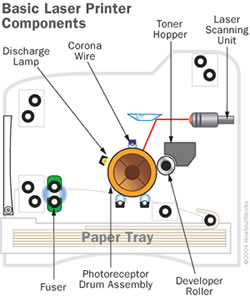 Laser printer is a type of printer that produces high quality text and graphics by passing a laser beam on plain paper. This process uses a xerographic printing process, which uses a cylindrical drum coated with selenium to print an image. Laser printers are quite huge and bulky and require fast paper feeders. These are most found in offices and commercial places that require high quality papers, printed fast. Laser printers are expensive units and require a dedicated place. Maintenance level is high for the device and is also expensive. Laser printers are more common in black and white, while colors printers cause extra. Laser printer was developed at Xerox in 1969 by Gary Starkweather. He modified an existing xerographic copier and fitted it with printing capabilities.
Laser printer is a type of printer that produces high quality text and graphics by passing a laser beam on plain paper. This process uses a xerographic printing process, which uses a cylindrical drum coated with selenium to print an image. Laser printers are quite huge and bulky and require fast paper feeders. These are most found in offices and commercial places that require high quality papers, printed fast. Laser printers are expensive units and require a dedicated place. Maintenance level is high for the device and is also expensive. Laser printers are more common in black and white, while colors printers cause extra. Laser printer was developed at Xerox in 1969 by Gary Starkweather. He modified an existing xerographic copier and fitted it with printing capabilities.
The printer works similar to a photocopier. The machine uses the data sent from the computer to create a raster line or scan line. The Raster Image Processing (RIS), typically built into the printer, creates a bitmap of the final image in the raster memory. After this, an electrostatic charge is applied to the photosensitive drum. The system also applies AC bias to the roller to remove any previous charges and a DC bias on the drum surface to ensure a uniform negative potential. A laser is then fired on the electro statically charged light-sensitive drum. The drum then attracts the toner in the places the charge is still present. The drum then becomes hot and fuses the toner to the paper, which then produces the image. Laser printers are quite extensive cleaning incase of jams and requires maintenance. However, one toner can produce up to 5,000 pages before replacement.
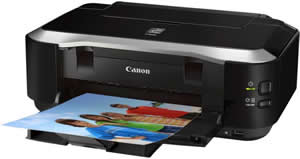 Inkjet is a type of printer that produces images by propelling droplets of ink onto the paper. These printers are the most common type of printers that are available in households. They are usually small in size and can range in prices, depending on the company and the functions it can perform. More expensive models might also come with copy, fax and scan functions. The concept of inkjet printing was developed in the 19th century, with the printer technology being developed in the late 1950s. Printers that could render digital images generated by computers were developed in the 1970s by Epson, Hewlett-Packard and Canon.
Inkjet is a type of printer that produces images by propelling droplets of ink onto the paper. These printers are the most common type of printers that are available in households. They are usually small in size and can range in prices, depending on the company and the functions it can perform. More expensive models might also come with copy, fax and scan functions. The concept of inkjet printing was developed in the 19th century, with the printer technology being developed in the late 1950s. Printers that could render digital images generated by computers were developed in the 1970s by Epson, Hewlett-Packard and Canon.
The inkjet printer works in a complicated way. It has a series of microscopic nozzles that spray a stream of ink directly onto the paper. The nozzles either have a high pressure pump or tiny heating elements behind them that helps deposit ink on the paper. There are two main technologies that are used in an inkjet printer: continuous (CIJ) and Drop-on-demand (DOD). In continuous technology, a high-pressure pump direct liquid ink from the cartridge through a gunbody and a microscopic nozzle, creating a continuous stream of ink droplets that are deposited on the paper. Extra unwanted ink is dropped into a gutter, which is recycled when the printer is active again. Drop-On-Demand is divided into thermal DOD and piezoelectric DOD. The thermal DOD uses a heating element to heat the ink in a chamber, which cools when applied to the paper. The piezoelectric DOD uses a piezoelectric material behind each nozzle instead of a heating element. In DOD, the printer cartridges fires ink only at special points on the surface that is required for creating an image.
Inkjet printers produce cheaper copies but prints slower compared to laser printers. These are also small and compact, with the printer fitting right on the desk or workstation. The initial cost of these printers is quite cheap, but Officejet is usually more expensive than the basic model as it incorporates other features. Inkjet printers are honed for their ability to print good quality and sharp text and images and to print on almost any kind of paper. Advantages of an inkjet include quieter in operation, high print quality, no warm up time and low cost per page. While, disadvantages are the ink is expensive (cheaper alternates are available from third party cartridges), ink is not waterproof, the nozzle is prone to clogging and the ink dries up if not used for long periods of time.
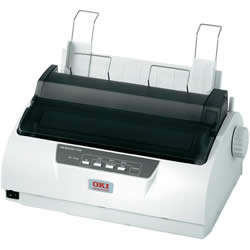 Dot Matrix printers is a type of printer that produces documents by having a printer head run back and forth and strike against an ink soaked ribbon to produce characters. The name Dot Matrix comes from the image of font which comes in dotted style. Dot matrix printers use similar technology to typewriters. Originally, Dot Matrix printers were quite popular printers used; they have now been replaced by inkjet or laser printers in today’s world. This is mainly due to cheaper cost in production for inkjet and laser technology. However, they have not completely become obsolete. These printers are still produced for niche markets such as cash registers, banks, fire alarm systems and ATMs.
Dot Matrix printers is a type of printer that produces documents by having a printer head run back and forth and strike against an ink soaked ribbon to produce characters. The name Dot Matrix comes from the image of font which comes in dotted style. Dot matrix printers use similar technology to typewriters. Originally, Dot Matrix printers were quite popular printers used; they have now been replaced by inkjet or laser printers in today’s world. This is mainly due to cheaper cost in production for inkjet and laser technology. However, they have not completely become obsolete. These printers are still produced for niche markets such as cash registers, banks, fire alarm systems and ATMs.
Dot Matrix works similar to a typewriter, but a little more complex. Dot Matrix produces documents by pushing small pins, known as ‘wire’ or ‘rod’ against a ribbon dipped in ink to the surface of a paper, and creates the text. This rod is controlled by tiny electromagnets or solenoids. Between the ribbon and the surface there is a plate with holes that guide the pins and separate the rest of the ribbon from the paper. The pins are a part of the printerhead. The printer prints one line of text at a time. There are two different types of printers: serial dot matrix printers and line dot matrix printers. Serial dot matrix uses a horizontally moving print head. However, in Line dot matrix uses a fixed printer head that is almost as wide as the paper. Serial dot matrix printers can produce 50-550 characters per second (cps), while line dots can produce 1000 cps.
Dot Matrix printers were introduced by Digital Equipment Corporation in 1970 and became one of the popular printers at that time for use in applications such as receipts, ATM machines, data logging, aviation or other point-of-sales terminals. Though, the printer is slow, loud and expensive in printing each page, it is popular because of its carbon and carbonless copy capability, which allows it to create copies in a single print. After initial purchase, the printer uses a ribbon dipped in ink, which is fairly cheap and easy to replace. It isn’t the widely used printer today, but it still has a presence in a niche market.
|
|
Laser Printers |
Inkjet Printers |
Dot Matrix Printers |
|
Invented |
1969 by Gary Starkweather. |
Developed in the early 1950s. |
Introduced by Digital Equipment Corporation in 1970. |
|
How it works |
Laser printers use fine ink powder and heat the powder on the paper. |
Inkjet printers spray liquid ink on paper through microscopic nozzles. |
Dot Matrix works having pins pushed against an ink soaked ribbon to paper. |
|
Types |
Personal and Office printers. Black and White or color printers. |
Continuous (CIJ) and drop-on demand (DOD). |
Serial Dot Matrix printers and Line Dot Matrix. |
|
Price per page |
USD 0.6 for black and white page. Much higher for a color page. |
USD 0.20 color page; USD 0.4-0.5 black and white page. |
Copies are quite cheap. |
|
Cost for basic printer |
Approximately USD 60-1000, depending on the size and use of the printer. |
Approximately USD 100-150 |
Basic cost of printer is quite expensive. Compared to an inkjet, dot matrix can cost between two to ten times more. |
|
Printing speed |
20 pages a minute |
6 pages a minute |
30-550 characters per second. |
|
Quality |
Printing quality is adequate. Best for black and white. |
Printing quality is good, specially for smaller fonts. |
Printing quality is bad if printing images. In terms of text, printing is fine. |
|
Color Printing |
Basic models only offer black and white, with higher models providing color printing. |
Yes provides color printing. |
Limited color printing. |
|
Black and White Quality |
Black and white quality is adequate, best for bulk printing. |
Black and white quality is excellent, specially with small fonts. |
Can print adequate quality images. |
|
Color Quality |
Color quality is a bit poor, with banding. |
Color printing is sharp and excellent. |
Only works best with low-res images. |
|
Size |
Smaller is available but is more common in larger sizes. |
Smaller and more compact. |
Size ranges depending on usage. New compact ones are also available. |
|
Features |
Offers scanners and faxing machines built in. Has bigger input trays, direct connecting facilities (wireless) |
Can be used for wider range of papers (photo paper, vinyl, self-adhesive papers), accurate photographic images, ink is not waterproof. |
Used for a variety of purposes. Can print on various types of papers. |
|
Usage |
Most commonly used for commercial purposes and places that require black and white printing. |
More commonly used for homes as the unit is smaller and ink is cheaper. |
Used to be used for office uses, but now only used by select places such as banks. |
|
Maintenance |
Expensive |
Cheaper |
Expensive, parts are hard to come by. |
|
Advantages |
Prints faster, bigger input trays. |
Quieter in operation, high print quality, no warm up time, low cost per page |
Cheaper to print as ribbon is cheap. |
|
Disadvantages |
More susceptible to paper jams. Toner is very expensive, print quality for color is adequate, device itself is expensive, has health hazards if not properly maintained. |
Ink is expensive, issues with ‘intelligent’ ink cartridges, lifetime of inkjet prints produced by aqueous inks is shorter, ink is not waterproof, and nozzle is prone to clogging. |
Initial purchase is expensive, maintenance is expensive, prints is not fast, makes noise. |
Image Courtesy: howstuffworks.com, gadgetspeak.com, advancetec.co.uk





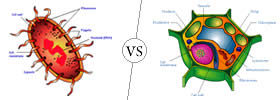
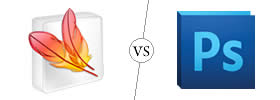
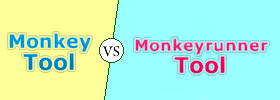
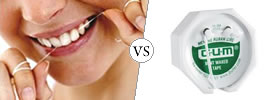
Add new comment